Indoor Anti-Collision System for Smart Healthcare - ENN591 Project
VerifiedAdded on 2022/11/26
|6
|726
|406
Presentation
AI Summary
This presentation analyzes a smart healthcare anti-collision system designed to aid visually impaired individuals. The project focuses on an indoor anti-collision alarm system based on wearable Internet of Things (IoT) and RFID technology. The introduction highlights the need for smart healthcare...
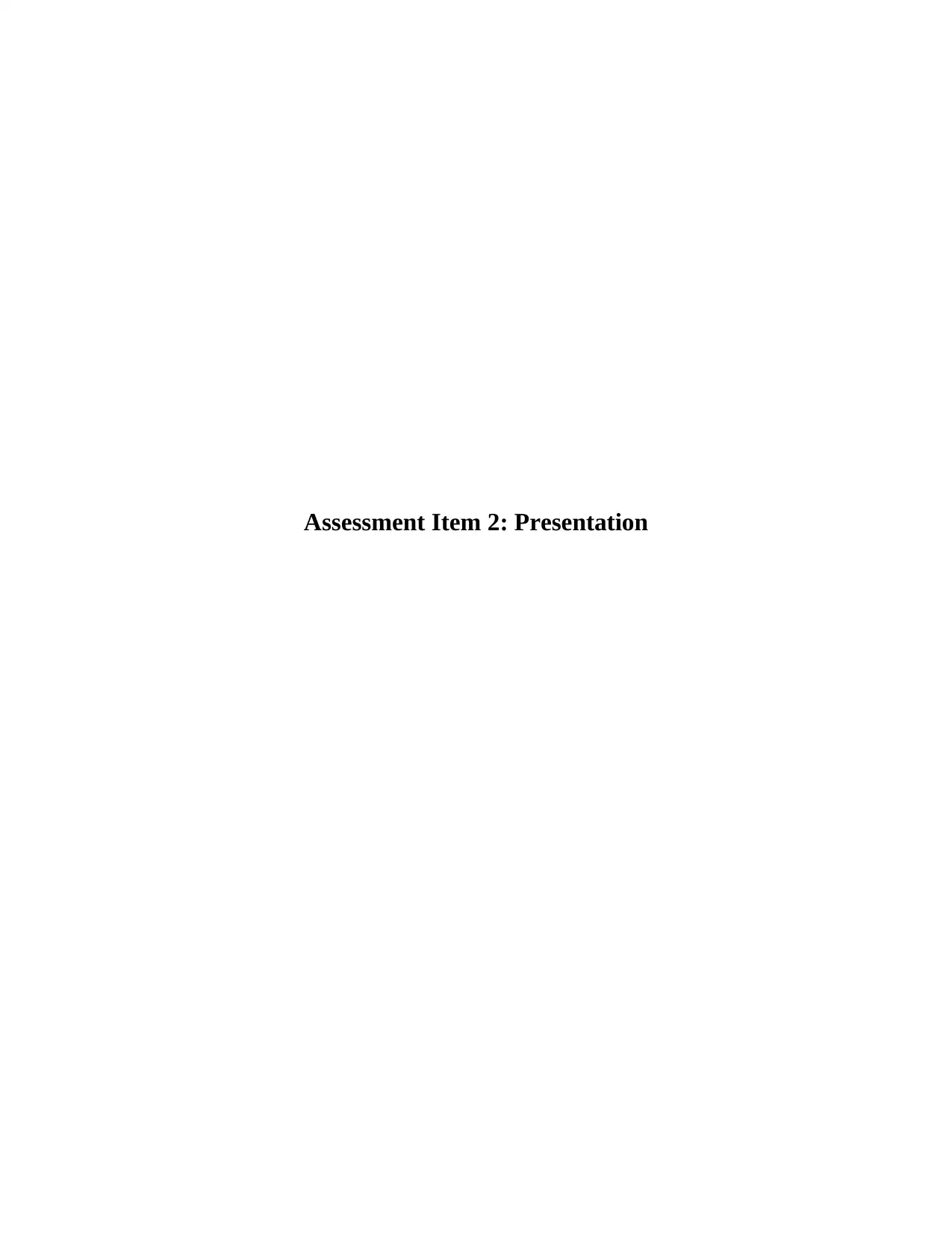
Assessment Item 2: Presentation
Paraphrase This Document
Need a fresh take? Get an instant paraphrase of this document with our AI Paraphraser
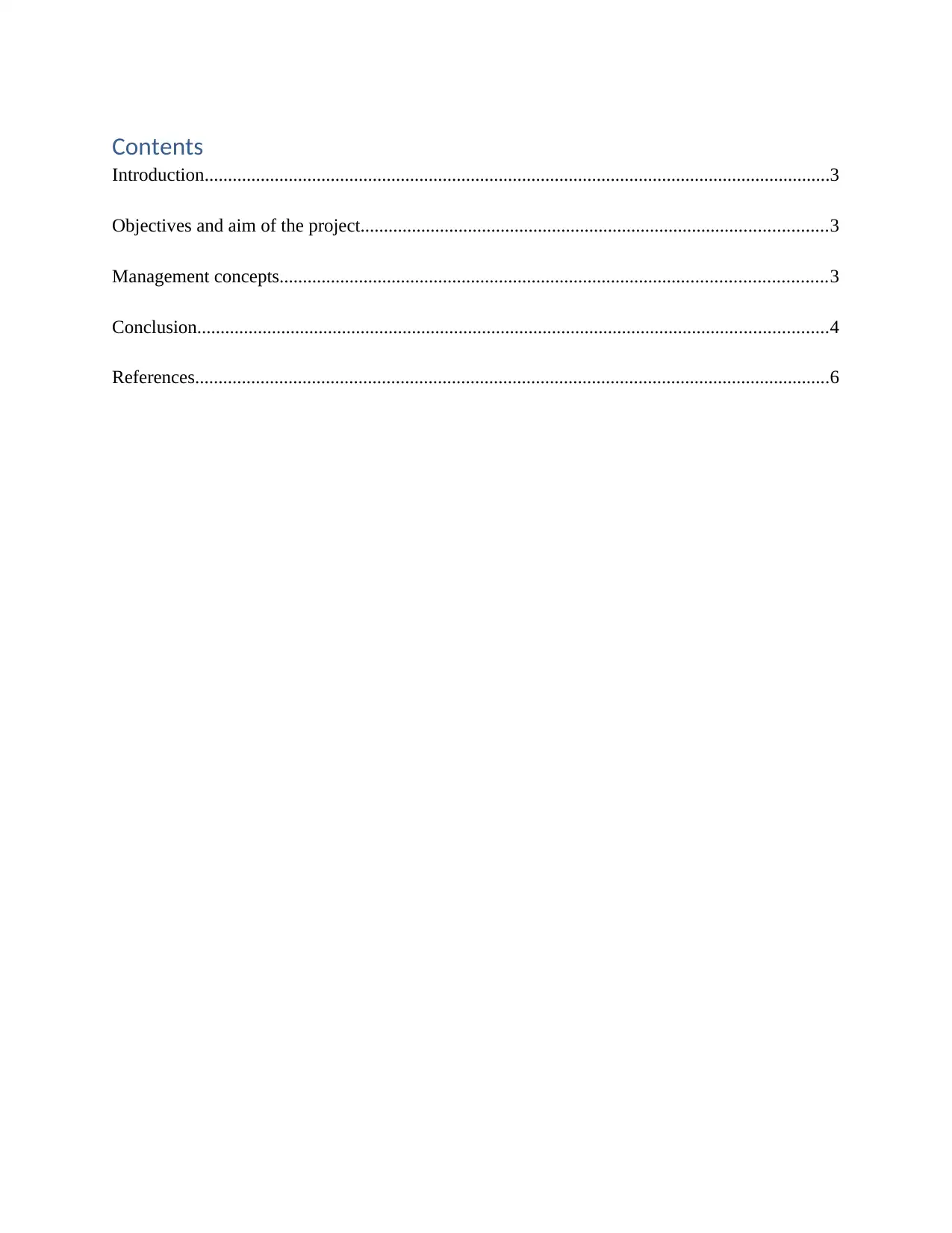
Contents
Introduction......................................................................................................................................3
Objectives and aim of the project....................................................................................................3
Management concepts.....................................................................................................................3
Conclusion.......................................................................................................................................4
References........................................................................................................................................6
Introduction......................................................................................................................................3
Objectives and aim of the project....................................................................................................3
Management concepts.....................................................................................................................3
Conclusion.......................................................................................................................................4
References........................................................................................................................................6
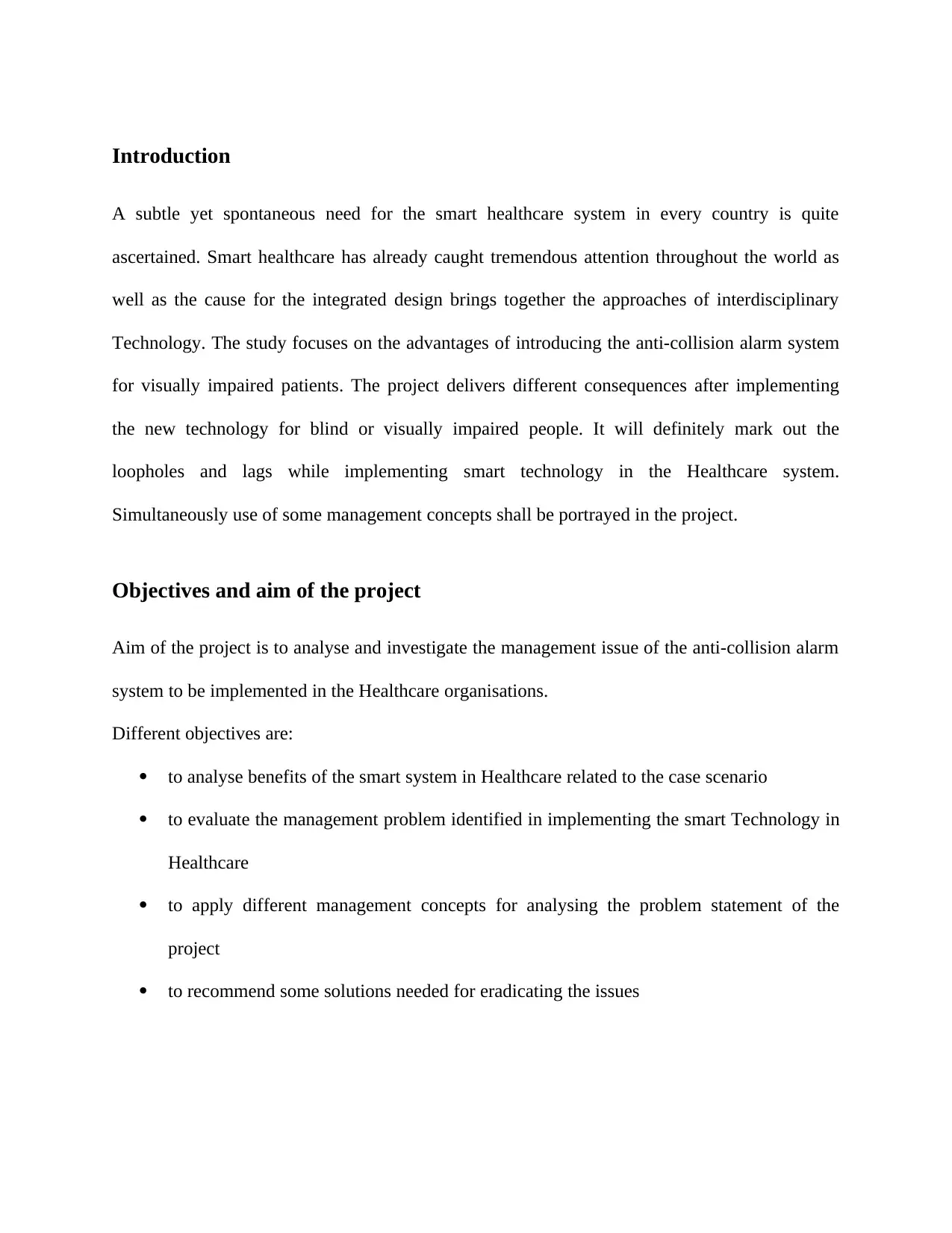
Introduction
A subtle yet spontaneous need for the smart healthcare system in every country is quite
ascertained. Smart healthcare has already caught tremendous attention throughout the world as
well as the cause for the integrated design brings together the approaches of interdisciplinary
Technology. The study focuses on the advantages of introducing the anti-collision alarm system
for visually impaired patients. The project delivers different consequences after implementing
the new technology for blind or visually impaired people. It will definitely mark out the
loopholes and lags while implementing smart technology in the Healthcare system.
Simultaneously use of some management concepts shall be portrayed in the project.
Objectives and aim of the project
Aim of the project is to analyse and investigate the management issue of the anti-collision alarm
system to be implemented in the Healthcare organisations.
Different objectives are:
to analyse benefits of the smart system in Healthcare related to the case scenario
to evaluate the management problem identified in implementing the smart Technology in
Healthcare
to apply different management concepts for analysing the problem statement of the
project
to recommend some solutions needed for eradicating the issues
A subtle yet spontaneous need for the smart healthcare system in every country is quite
ascertained. Smart healthcare has already caught tremendous attention throughout the world as
well as the cause for the integrated design brings together the approaches of interdisciplinary
Technology. The study focuses on the advantages of introducing the anti-collision alarm system
for visually impaired patients. The project delivers different consequences after implementing
the new technology for blind or visually impaired people. It will definitely mark out the
loopholes and lags while implementing smart technology in the Healthcare system.
Simultaneously use of some management concepts shall be portrayed in the project.
Objectives and aim of the project
Aim of the project is to analyse and investigate the management issue of the anti-collision alarm
system to be implemented in the Healthcare organisations.
Different objectives are:
to analyse benefits of the smart system in Healthcare related to the case scenario
to evaluate the management problem identified in implementing the smart Technology in
Healthcare
to apply different management concepts for analysing the problem statement of the
project
to recommend some solutions needed for eradicating the issues
⊘ This is a preview!⊘
Do you want full access?
Subscribe today to unlock all pages.

Trusted by 1+ million students worldwide
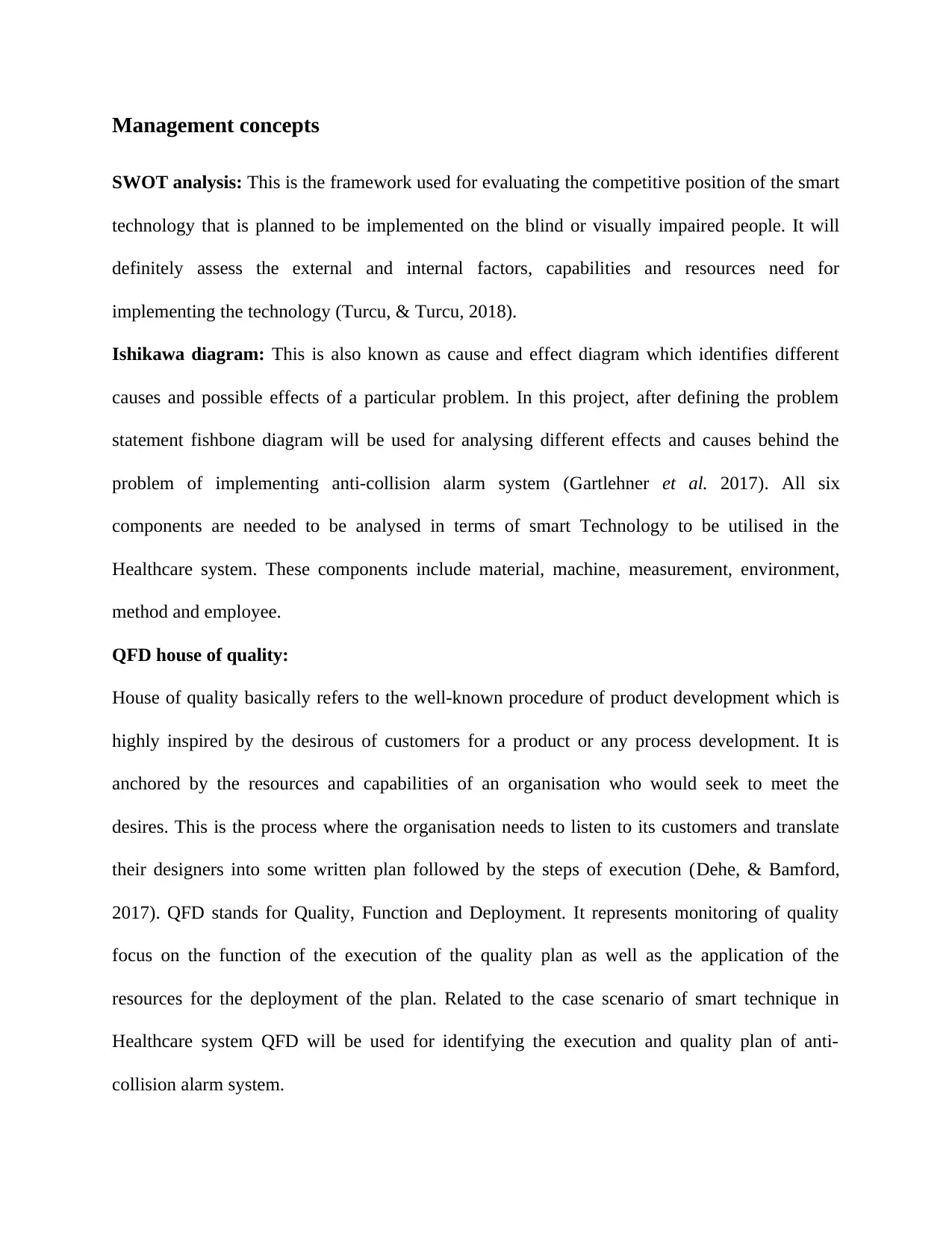
Management concepts
SWOT analysis: This is the framework used for evaluating the competitive position of the smart
technology that is planned to be implemented on the blind or visually impaired people. It will
definitely assess the external and internal factors, capabilities and resources need for
implementing the technology (Turcu, & Turcu, 2018).
Ishikawa diagram: This is also known as cause and effect diagram which identifies different
causes and possible effects of a particular problem. In this project, after defining the problem
statement fishbone diagram will be used for analysing different effects and causes behind the
problem of implementing anti-collision alarm system (Gartlehner et al. 2017). All six
components are needed to be analysed in terms of smart Technology to be utilised in the
Healthcare system. These components include material, machine, measurement, environment,
method and employee.
QFD house of quality:
House of quality basically refers to the well-known procedure of product development which is
highly inspired by the desirous of customers for a product or any process development. It is
anchored by the resources and capabilities of an organisation who would seek to meet the
desires. This is the process where the organisation needs to listen to its customers and translate
their designers into some written plan followed by the steps of execution (Dehe, & Bamford,
2017). QFD stands for Quality, Function and Deployment. It represents monitoring of quality
focus on the function of the execution of the quality plan as well as the application of the
resources for the deployment of the plan. Related to the case scenario of smart technique in
Healthcare system QFD will be used for identifying the execution and quality plan of anti-
collision alarm system.
SWOT analysis: This is the framework used for evaluating the competitive position of the smart
technology that is planned to be implemented on the blind or visually impaired people. It will
definitely assess the external and internal factors, capabilities and resources need for
implementing the technology (Turcu, & Turcu, 2018).
Ishikawa diagram: This is also known as cause and effect diagram which identifies different
causes and possible effects of a particular problem. In this project, after defining the problem
statement fishbone diagram will be used for analysing different effects and causes behind the
problem of implementing anti-collision alarm system (Gartlehner et al. 2017). All six
components are needed to be analysed in terms of smart Technology to be utilised in the
Healthcare system. These components include material, machine, measurement, environment,
method and employee.
QFD house of quality:
House of quality basically refers to the well-known procedure of product development which is
highly inspired by the desirous of customers for a product or any process development. It is
anchored by the resources and capabilities of an organisation who would seek to meet the
desires. This is the process where the organisation needs to listen to its customers and translate
their designers into some written plan followed by the steps of execution (Dehe, & Bamford,
2017). QFD stands for Quality, Function and Deployment. It represents monitoring of quality
focus on the function of the execution of the quality plan as well as the application of the
resources for the deployment of the plan. Related to the case scenario of smart technique in
Healthcare system QFD will be used for identifying the execution and quality plan of anti-
collision alarm system.
Paraphrase This Document
Need a fresh take? Get an instant paraphrase of this document with our AI Paraphraser
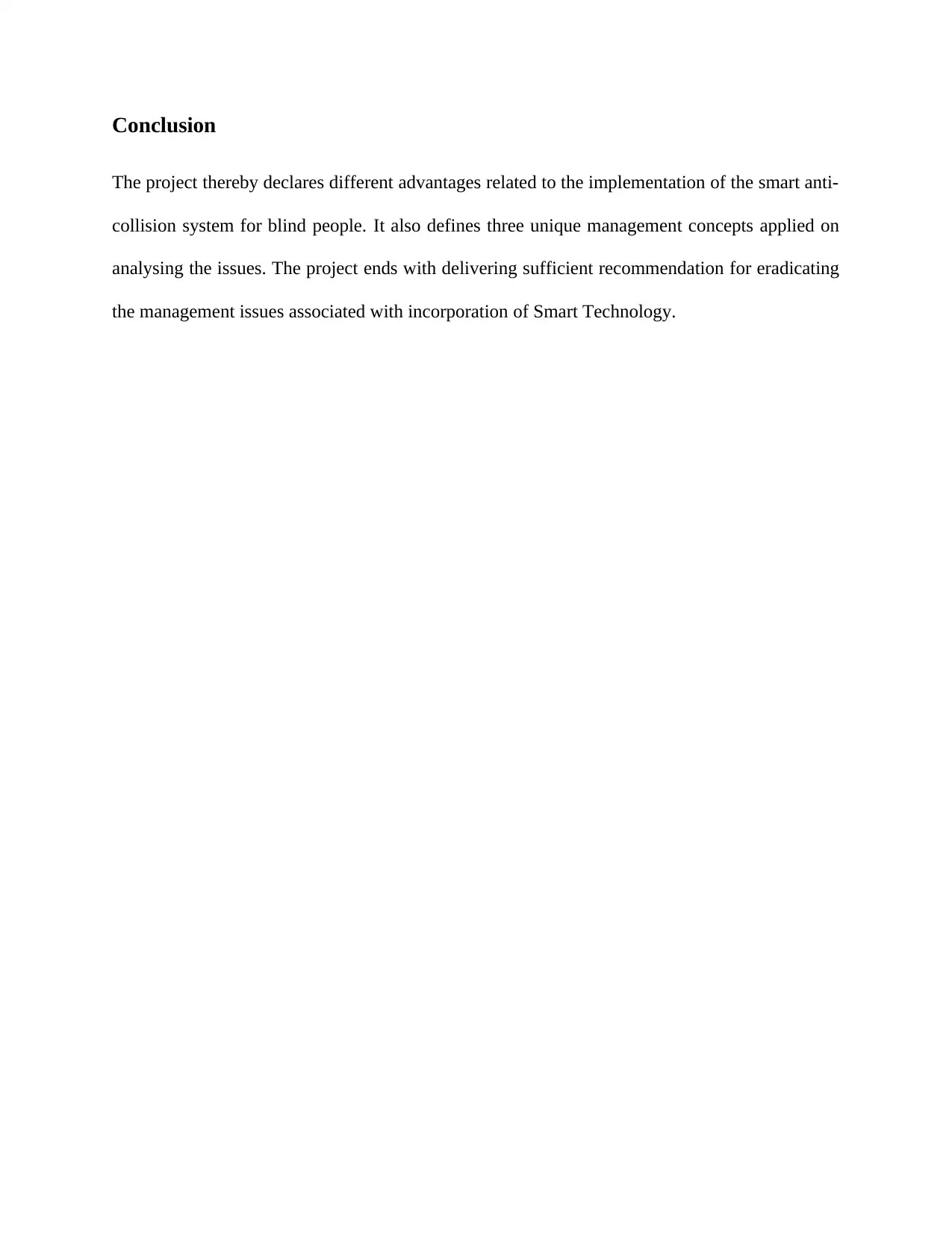
Conclusion
The project thereby declares different advantages related to the implementation of the smart anti-
collision system for blind people. It also defines three unique management concepts applied on
analysing the issues. The project ends with delivering sufficient recommendation for eradicating
the management issues associated with incorporation of Smart Technology.
The project thereby declares different advantages related to the implementation of the smart anti-
collision system for blind people. It also defines three unique management concepts applied on
analysing the issues. The project ends with delivering sufficient recommendation for eradicating
the management issues associated with incorporation of Smart Technology.
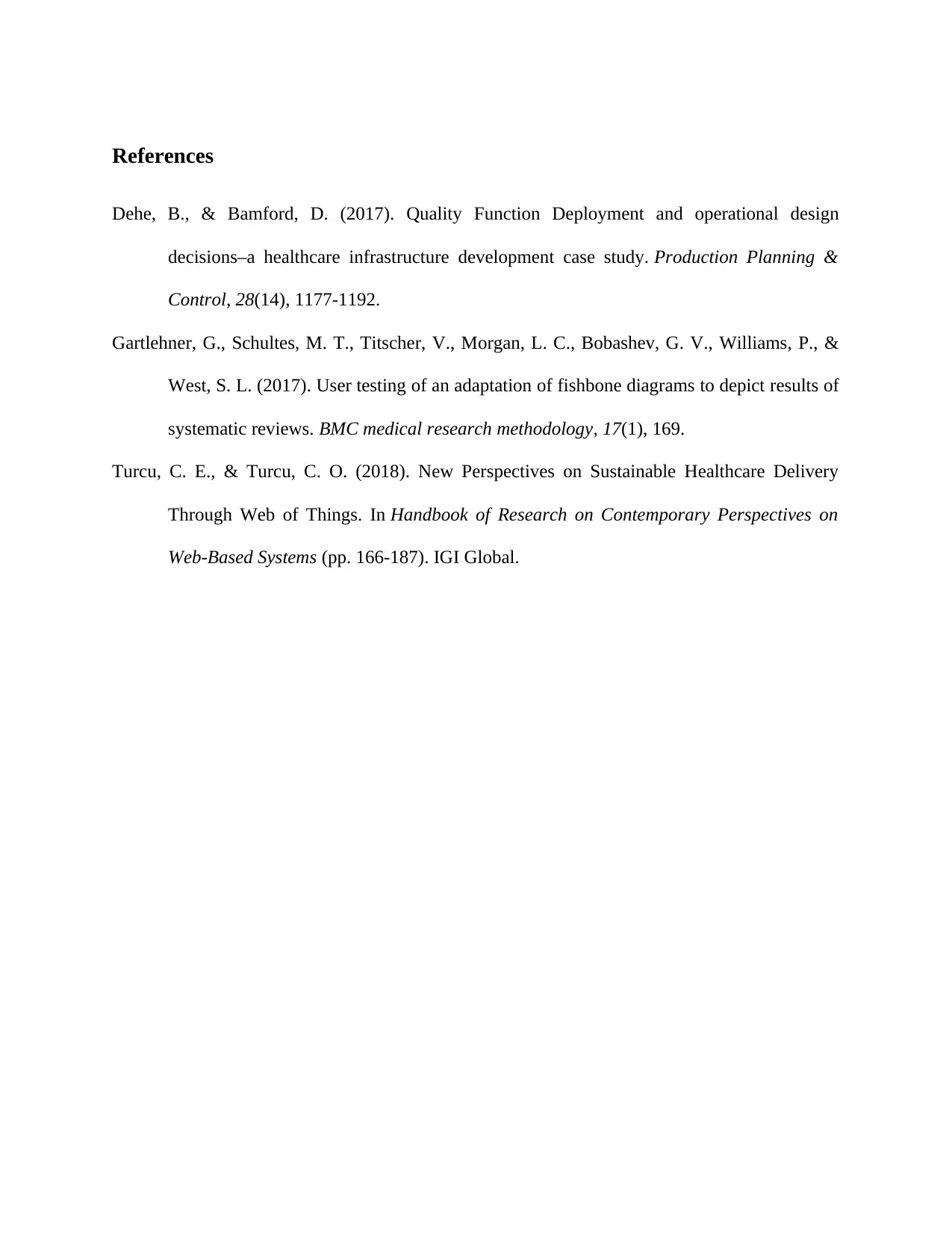
References
Dehe, B., & Bamford, D. (2017). Quality Function Deployment and operational design
decisions–a healthcare infrastructure development case study. Production Planning &
Control, 28(14), 1177-1192.
Gartlehner, G., Schultes, M. T., Titscher, V., Morgan, L. C., Bobashev, G. V., Williams, P., &
West, S. L. (2017). User testing of an adaptation of fishbone diagrams to depict results of
systematic reviews. BMC medical research methodology, 17(1), 169.
Turcu, C. E., & Turcu, C. O. (2018). New Perspectives on Sustainable Healthcare Delivery
Through Web of Things. In Handbook of Research on Contemporary Perspectives on
Web-Based Systems (pp. 166-187). IGI Global.
Dehe, B., & Bamford, D. (2017). Quality Function Deployment and operational design
decisions–a healthcare infrastructure development case study. Production Planning &
Control, 28(14), 1177-1192.
Gartlehner, G., Schultes, M. T., Titscher, V., Morgan, L. C., Bobashev, G. V., Williams, P., &
West, S. L. (2017). User testing of an adaptation of fishbone diagrams to depict results of
systematic reviews. BMC medical research methodology, 17(1), 169.
Turcu, C. E., & Turcu, C. O. (2018). New Perspectives on Sustainable Healthcare Delivery
Through Web of Things. In Handbook of Research on Contemporary Perspectives on
Web-Based Systems (pp. 166-187). IGI Global.
⊘ This is a preview!⊘
Do you want full access?
Subscribe today to unlock all pages.

Trusted by 1+ million students worldwide
1 out of 6
Related Documents
Your All-in-One AI-Powered Toolkit for Academic Success.
+13062052269
info@desklib.com
Available 24*7 on WhatsApp / Email
![[object Object]](/_next/static/media/star-bottom.7253800d.svg)
Unlock your academic potential
© 2024 | Zucol Services PVT LTD | All rights reserved.





